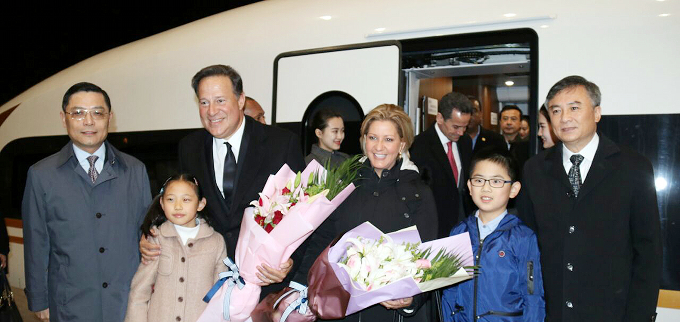
Our grand connection with the Silk Road (I)
by Marco A. Gandásegui, hijo
In Panama there are no real political parties. Nor are there organizations that invite you to a permanent and systematic debate about national affairs. President Juan Carlos Varela made a trip to the Peoples Republic of China during which he committed the country — and all of its population — to undertake 19 financial agreements with its Asian counterpart. The communications media, instead of analyzing the agreements one by one, have by and large emphasized that among the members of the presidential delegation we found labor leader Genaro López, the secretary general of FAD. They also emphasized the team that President Varela picked from among the conspicuous members of the economic and social elites of this country to accompany him.
Let’s present each of the accords for a better understanding of them. This will be done in two parts. This is the first and the second will come next week. In this installment we will analyze the first 10 agreements that have been made public. These accords concentrate on actitivities that Chinese investors will carry out in Panama to prepare for their expansion in the region. They will build all the necessary infrastructure needed to invest enormous sums of money to promote their penetration of the region’s economies.
The Chinese are very clear in the objectives that make up the Silk Road. [See, e.g., this and this.] Panama will be a key instrument in the development of this strategy. China is not only betting on the extraction of metals and foodstuffs from the soil of the Americas. They come with a lot of energy to conquer the high tech market.
The accords reflect a plan conceived in Beijing. They appear to have been drafted in Chinese and later translated into Spanish. Moreover, these agreements only refer to what China will do in Panama. Everything indicates that Panama will play a passive role, which in our country’s history has ended in tragedies and catastrophes.
Let’s analyze each of these agreements. We can do it starting from a criterion of relative “importance” or following a quantitative order of the size of the investments. Let’s instead choose to follow the same order in which the agreements were published.
The first refers to an “understanding” for the promotion of trade and investment. It attempts to attract Chinese investments in Panama. It would serve as a framework to channel Chinese capital investments into the most strategic sectors for Chinese expansion into Latin America.
The second agreement is between the Development Bank of China and the Ministry of Economy and Finance and attempts to facilitate Chinese financial activities in the country and the region. This agreement mentions investments in infrastructure, from bridges and ports to electrical power stations.
The third agreement is between the Ministry of Economy and Finance and the Chinese Import and Export Bank (EximBank). According to the draft agreement, the Chinese bank would extend to Panama a line of credit equivalent to $200 billion. We have to ask whether that amount is for projects in Panama or for the whole region. With this capital about 40 Panama Canals could be expanded.
The fourth agreement is a free trade treaty. While the first three accords may have some promise, this one about “free trade” is a mere salute to the flag of satisfying the desires of some merchants who are eager to make more money without creating any jobs.
The fifth agreement refers to “cooperation in productive and investment capacity.” Along this line, the construction and operation of infrastructure stand out. The initiative would entail an initial investment of $10 billion.
The sixth agreement refers to phytosanitary measures to protect China from Panamanian exports.
The seventh agreement refers to loans by the EximBank to ETESA for the develpment of projects in Panama’s electrical sector. All of the funds that ETESA receives would be for “the direct or indirect purchase of Chinese products or services.”
The eighth agreement also refers to the electrical sector and ETESA. This latter Panamanian state enterprise would receive credits from the Bank of China.
The ninth agreement is to increase productivity in the Panamanian agricultural sector with the thought of exports to China. The accord appeas to emphasize joint projects both in production and in research.
The tenth agreement isn’t very clear — all that is mentioned is that a mixed commission will be created to “examine the scope of projects.”
In the next part the rest of the accords will be analyzed, including the much-discussed “bullet train.”
~ ~ ~
These announcements are interactive. Click on them for more information.
Estos anuncios son interactivos. Toque en ellos para seguir a las páginas de web.












